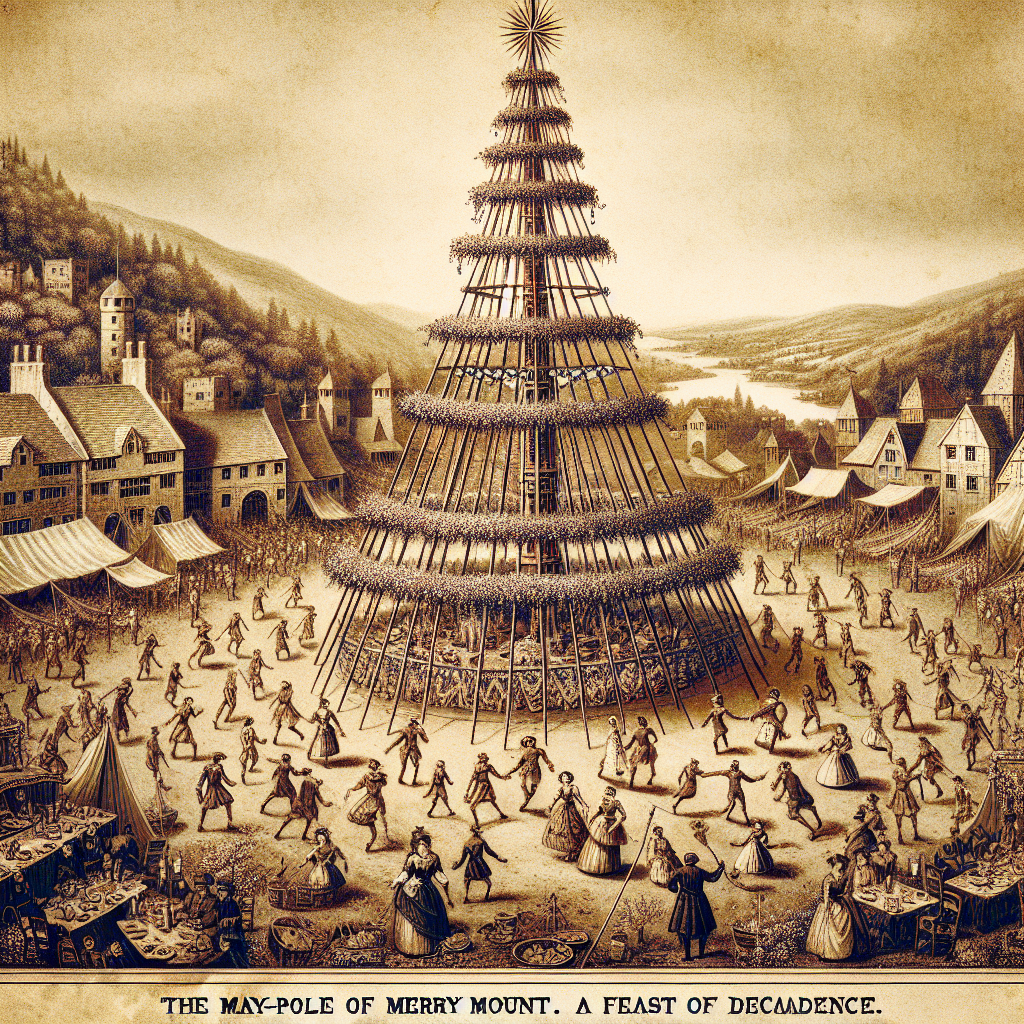The wild antics of 'The May-Pole of Merry Mount' are like a fierce dance-off that you can’t look away from. Written by Nathaniel Hawthorne in 1835, this short story takes us to colonial America in the year 1628. Picture this: a vibrant, lively group of settlers throwing an epic party at Merry Mount, a place brimming with laughter and dance. They’d decorated a massive May-Pole, a symbol of joy and festivity, while nearby Puritans, led by the stern John Endicott, were anything but amused by the merriment.
Hawthorne's tale isn't merely a snapshot of historical rivalry. It runs deeper, illustrating a clash of ideologies. On one side, you have the Merry Mounters, embracing joy, freedom, and expression, living each day like it's a festival. Opposite them stand the Puritans, upholding discipline, order, and strict adherence to their faith. The festivities of Merry Mount are like a colorful rebellion against the monochrome seriousness of Puritan life.
Hawthorne, with a masterful stroke, navigates through the dynamic between these communities, drawing readers into the essence of conflict between rigid tradition and unbounded happiness. He doesn’t shy away from highlighting the dark undercurrents in both groups. The Merry Mounters’ joyous world is not flawless; it hints at an ignorance of consequences and a detachment from reality.
The Puritans, however, are depicted with a mix of iron discipline and the burden of harsh judgment. Their delight seems inversely proportional to their self-imposed austerity. When they eventually crash the merry festivities, capturing and punishing the participants, Endicott defends this harshness through a twisted sense of righteousness.
Hawthorne’s own period wasn’t free from echoes of this old-world conflict. Writing in the early 19th century, he witnessed a society wrestling with its own dualities. The story’s deeper themes resonate through time, holding a mirror to America’s continual balancing act between freedom and order, community and individuality.
Nevertheless, Hawthorne leaves room for reflection on both ends. Can we wholly fault the Puritans for their sternness, given the tumultuous era they lived in? Was unwavering order really the key to survival, or merely a suppressive force? And are the Merry Mounters’ carefree ways a path towards true freedom, or merely naive hedonism?
Hawthorne wrote as a liberal but possessed an uncanny knack for unveiling the layers beneath human behavior. Today, much like the coexistence of these 17th-century factions, our modern world still battles between opposing philosophies. Tradition versus progress. Conformity versus individuality. Security versus freedom.
The story’s essence surpasses the period costumes and colonial settings. It broadcasts a universal truth: societies will always have to face the friction between the control imposed by structure and the chaos permitted by liberty. Generations later, the 'May-Pole of Merry Mount' serves as a compelling reminder of the long dance of morals and ideologies that continues to shape humanity.
We, too, must weigh joy against responsibility. The narrative is akin to asking ourselves, "How far can joy soar before it must succumb to the realities of the world?" Hawthorne challenges us to ask—as individuals and as members of a larger community—what form our own pole stands as, and which celebration our feet rally toward.
While Gen Z steps into a world brimful with potential shifts towards either end of this spectrum, the story echoes the timeless question of balance. The land of Merry Mount may fade in history, but the cheer and resilience in its dance linger, urging each of us to find our rhythm amid life’s structured chaos.

